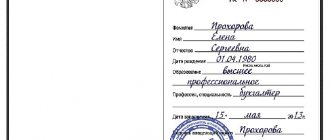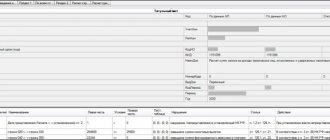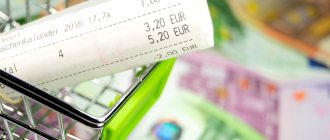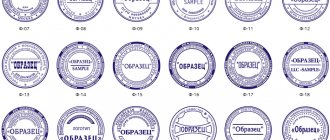The calculation card (card) is used to calculate the prices of dishes served in cafes, bars, restaurants, canteens and other catering establishments. Usually its development is in the introduction of the accountant-calculator. It is this document that should illustrate how much, what and at what cost it was required to produce a particular dish.
- Form and sample
- Free download
- Online viewing
- Expert tested
FILES
What is needed for calculation
In order to correctly calculate the calculation, you will need:
- Menu indicating the list of dishes.
- Technological map for each dish indicated in the menu.
- The purchase price of all products needed for cooking.
Let's look at each of these points.
Menu
When choosing dishes for the dining room, you should not go to extremes. Simple dishes should be presented here. In addition, calculating dishes with complex positions will become even more difficult.
Routing
This is a document that contains information about all the features of the prepared food , such as the timing and storage conditions of the dish, nutritional value, recipe with composition and cooking algorithm, requirements for serving and selling the finished product, appearance, portion weight.
Neglecting this document is unacceptable. You can purchase a ready-made technological map or create it yourself. The first option is quite expensive, and the second is not as complicated as it might seem at first.
Purchase price
Without this point it is impossible to calculate the calculation. It is advisable to add transport costs to them.
Menu
A little advice: when choosing dishes for the dining room, do not overdo it. The very definition of this catering outlet implies simple, unsophisticated food that can evoke nostalgia for the times of the Union. In other words, no sushi. And the abundance of complex items will make calculating dishes, if not more problematic, then certainly more boring. A list as thick as an encyclopedia is difficult to maintain both professionally and financially, since it is difficult to find general-purpose chefs for a canteen, and maintaining the required composition of products on an ongoing basis is expensive.
What is included?
The file contains 3 Excel tables, namely: a register, technological maps and calculations for 302 dishes. It’s easy to manage all this by moving through tabs in one window. Please note that these are not three files, but one, in which there are three Excel sheets, they are named according to the sections.
Technological maps:
Each card contains the name of the raw material, as well as the norm for 1 and 100 servings, which is convenient for calculating large volumes in public catering. These cards are compiled according to a collection of recipes from 1982. The dishes are universal. When prices in the product register change, all prices in technological maps are recalculated automatically. This is a definite plus.
Product registry:
The product register is shown on a separate sheet in the Excel file. It shows prices per kilogram of raw materials. The register is connected by formulas with technological maps.
Calculation of dishes:
A separate sheet contains a list of 302 dishes. For each dish, the cost per serving is calculated according to the technological maps. This is the best solution for a canteen or cafe where dishes are prepared according to a collection of recipes from 1982.
Technological maps
This term refers to a document that contains information about all the features of a dish. It includes the following data (not necessarily all, some are selective):
- Duration and specifics of storage of the dish. Conventionally: ice cream at a temperature of -18...-24 oC is stored for 3 months, while bread, at a temperature of +20...+25 oC, is stored for 72 hours;
- nutritional value of the finished dish: number of calories, in some cases - protein/fat/carbohydrate ratio;
- requirements for the sale and serving of finished dishes;
- the recipe itself, which includes the composition and cooking algorithm;
- recipe source;
- description of the appearance, principle of decorating the dish;
- weight of the finished portion.
You cannot neglect the technological map, since the principles of work “at random” and “by eye” will only please you until the first fine from the supervisory authorities.
You can acquire this document in two ways - purchase a ready-made one, which will be made to order for you, or withdraw it yourself. The first one is downright expensive, but the second one is not complicated, as we will prove below.
What to rely on when filling out
Standard dishes are contained in a collection of recipes. This can be either a book published in 1994 or 1996.
The list of current collections can be found in Letters of the Ministry of Trade of the Russian Federation dated 06/07/1999 N 21-9/410 and Roskomtorg dated 07/15/1996 N 1-806/32-9.
The list of ingredients from the collection of recipes is simply transferred to the table to be filled out. If a dish is not in the collection of recipes, then this dish must be specially presented as prepared according to the TTK (technological map of the dish). The latter is developed individually in each company.
Components of a document
The calculation card is filled out on one side. If one sheet is missing, you can continue the table on the next page. The calculation card indicates:
- On what legal basis is the document based? In particular, this basis is Resolution of the State Statistics Committee No. 132 of December 25, 2012. It is in it that unified forms are prescribed, such as this OP-1.
- Form of paper according to OKUD (0330501) and OKPO.
- The organization, its structural unit (if any), its type of activity according to OKDP, the number of the dish according to the collection of recipes.
- Type of operation performed.
This information is introductory. The essence itself is presented in the form of a table in which the following are listed in separate columns:
- document number and date of its preparation;
- serial number of the prepared calculation;
- deadline for approval of the above calculations;
- names of products and their codes;
- several dates with the same ingredients (in the example and sample - six, but their number may vary) with the rate of use per 100 dishes, price and amount for each.
The last item is intended to reflect in the table changes in the cost of certain products, their weight, etc. For example, if a calculation card is drawn up for buckwheat milk soup, then when the price of buckwheat or milk changes, the total cost of the finished dish naturally changes.
There is a type of document that does not provide for price changes (it has only one approval column). In this case, when the cost jumps, a new document is drawn up, and the old one loses its validity. This fact must be recorded in the costing register.
At the end of the tabular part, the results for the dish are summarized, such as:
- total cost of the raw material set (indicated for each column separately);
- what is the markup;
- final cost, sale price in rubles;
- weight of the finished product in grams;
- signatures of the production manager (chef controlling the process), the compiler of the costing card, as well as the head of the organization (or his authorized representative).
What positions are costing cards made for?
Calculation cards are based on:
- Semi-finished products
- products that have undergone culinary processing. A separate card is created for each semi-finished product, since the product loses weight during cleaning, heat treatment (cooking, frying) and storage. And due to weight loss, the cost of the product changes - its kilogram becomes more expensive.
In cards for semi-finished products, we enter the weight of the product (before processing) in the column “norm, kg” and its cost in the column “price per kg”. In the column “output of one finished dish, kg” we indicate the weight of the resulting semi-finished product (after processing) and in the column “total cost of the raw material set for 100 dishes” - the cost of 100 portions of the semi-finished product, taking into account recalculation.
| Important. To avoid confusion, the semi-finished product in the costing card must be named differently than the original product. For example, add “p/f” to the name. |
- Ready meals.
A card must be entered for each dish or drink. All ingredients of the dish and their cost are entered into it (if the ingredient is a semi-finished product, then its cost, taking into account recalculation). Only cards for prepared meals, unlike cards for semi-finished products, will also include a markup and sales price.
| How product processing affects the costing sheet and cost calculation Let's look at this using chicken fillet for Caesar salad as an example. We ordered 10 kg of chilled raw fillet at a price of 160 rubles per kilogram. For the salad, we will need to grill it with spices and oil. And draw up a costing card for the resulting semi-finished product. After grilling and slicing, the fillet will lose 30% of its weight. And since there is less product, now the cost of a kilogram has increased and is 228.57 rubles (1600 rubles / 7 kg). Additionally, the price will increase by 10 rubles due to spices and oil. Thus, the price of the “grilled fillet” ingredient in the Caesar salad calculation card will be indicated as 238.57 rubles per kilogram. | Cost 1 kg | |
| Raw (before processing) | 10 kg | 160 rubles |
| P/f “grill” (after frying and with the addition of spices) | 7 kg | 238.57 rubles |
Nuances of filling
The document is intended strictly for one name of dish. It is unacceptable to compile a paper for several culinary delights with different names at once. This, ultimately, turns out to be more convenient for accounting calculations, since both the price of any bleaching product and the markup on dishes (by order of management) can change. Depending on the convenience of a particular organization, the calculation of food storage is set at 100, 50 or 1 dish.
There are situations when the declared weight of the product after heat treatment does not meet the standards in the collection of recipes. For example, frozen fish fillets consist of 55% ice. In this case, it is defrosted, weighed and then the proportion is taken into account when it is defrosted.
Important! Since the composition of the products in this case does not deviate from that recommended in the collection of recipes, a separate technological map should not be issued for it. It is enough to simply change the permissible ratios.
The paper is intended for enterprises where precise calculation of kilocalories is not needed. If it is needed, new columns are added to the document. The same situation takes into account the necessary costs of water, gas, electricity. The number of columns is not limited. However, a written mention of such “improvement” of the document must be in the company’s papers. Calibration records and other documents are also drawn up along with it.
What is checked during inventory
The document must be provided during inspections, in particular for regular inventories. When carrying out the latter, a commission headed by the chairman gets acquainted with the register and map, compares the remaining remains of products and documents on their use. Naturally, they must match.
Important point! The final data of the calculation cards regarding the selling price of the dish must exactly match the price of this item in the menu that is provided to customers.
Calculation of the cost of goods in trade
It is better to start learning to calculate cost from the trade sector. There are fewer cost items here. Essentially, it is the purchase price set by the supplier; transportation costs for delivering goods to the warehouse; duties and customs fees if we import goods from abroad.
To calculate, fill out the following table:
We take a certain group of goods. And for each of them we will calculate the cost. The last column - the planned cost coefficient - will show the level of costs that the company will incur for the delivery of products.
Fill out the table:
- Transport costs, as reported by the logistics department, will amount to 5% of the purchase price.
- The duty amount will vary for different groups of goods. For goods 1 and 4 – 5%. For goods 2 and 3 – 10%. To make it more convenient to enter percentages, let’s sort the data by the “Product Name” column.
- To calculate, we use the formula: purchase price + transportation costs in monetary terms + duty in monetary terms.
- The formula for calculating the planned coefficient is cost in monetary terms / purchase price.
The level of costs for delivery of goods 1 and 4 will be 10%, 2 and 3 – 15%.
Formulas for calculating planned product costs in Excel
Each company calculates planned cost in its own way. After all, enterprises incur different costs depending on the type of activity. Any calculation must contain a breakdown of the costs of materials and wages.
Calculation of planned cost begins with determining the cost of the raw materials used and materials that are needed for the production of goods (which are directly involved in the technological process). Costs for raw materials are included in the cost according to the standards approved by the enterprise, minus technological losses. This data can be obtained from the technology or production department. The next direct cost item is the wages of production workers. The main salary and additional salary are taken into account. By what principles wages are calculated (piecework, time-based, based on output), you can find out in the accounting department.
Additional wages are all payments required by law, but not related to the production process (vacations, remuneration for long service, etc.).
We immediately entered other data for calculating cost calculations into the table:
The “Indicator Calculation” column indicates where we get the data from. If we refer to other tables, we use the totals from there.
Product cost calculation template with formulas:
- in Excel
- costing with data
- example of costing with overhead costs
To calculate the cost of packaging, conditional indicators of depreciation of fixed assets, percentage of additional wages and taxes, and mandatory insurance contributions were taken.
The popularity of catering outlets will never fade, because human laziness and love for food are eternal. Indeed, not everyone, having desired the Stolichny salad, cutlet Kiev and Prague cake for dessert, can afford to rush to the store in order to buy everything they need and lock themselves in the kitchen, cooking for several hours. The harsh reality of work, traffic jams and fatigue dictates its own rules, but you still want to eat delicious food. Entrepreneurial people who have managed to build a serious business out of a successful kitchen have been successfully making money on these human weaknesses for many years. How to correctly calculate the cost of a meal in a canteen so as not to work at a loss, or, conversely, not to scare away potential customers with exorbitant prices? At the same time, golden hands are not enough for success, because the market and competition dictate their own rules. It would seem - a canteen and a canteen, what can you earn there? However, people’s attachment to the classics, when they were still cooking according to the “Book of Tasty and Healthy Food,” is worth a lot.
On fingers
To tell the truth, at the moment the cost output is overestimated, since it is more logical to form the final price of a menu item based on people’s tastes, demand and average market requests, however, for internal tracking of costs and leveling of expenses, costing of dishes is still recommended.
For example, let’s take one of the currently popular French-style confectioneries: the company uses high-quality raw materials with a corresponding price tag, uses special equipment to prepare its products, which is quite expensive (for example, the same fully automated device for tempering chocolate - you can’t save money on it will work out, since this is fraught with failures and damage to expensive resources), rents a room of the required area, etc., etc. The costing of dishes is in full view, but they cannot reduce costs, since the quality, name and, as a result, demand will suffer, so they have to keep the bar. They also cannot put a uniformly high markup on those items that are roads themselves, and those 300% of the cost that are rumored by the population are simply brushed aside. So what should you do? Let's look at the menu that the confectionery offers:
- yeast baked goods;
- cakes and pastries;
- marshmallow candies.
The first and third positions in terms of cost, if not cheap, are close to it, while it’s impossible to “screw up” even half of the cakes due to expensive resources. Therefore, the second position is sold significantly cheaper, and the difference is made up by buns and sweets. Moral: calculating the cost of a dish is not always based on the purchase prices of its components.
Of course, a confectionery shop is different from a canteen, but the principle of working with final food products is similar.
Practical use
As mentioned earlier, the calculation of costing at the moment only indirectly affects its selling price, since the latter is formed under the influence of a number of characteristics, including the market average, resources spent on other menu items, as well as such banal needs , as ensuring the full functioning of the canteen. The latter indicates the price level that must be maintained for the profitability of the enterprise in general.
By and large, the canteen is a fairly profitable enterprise, since the standard list of dishes, which is usually an honor for this kind of establishment, is distinguished by a frankly low purchase price without losing its useful qualities. Relatively speaking, the preparation of the same vinaigrette or pickle takes a minimum of money, and the people’s love for them is close to the concept of “eternity.” Calculation of dishes can show the organization’s accounting department how profitable certain assortment items are, whether it is necessary to introduce something new or, conversely, remove dishes that do not pay for themselves.
Where to begin?
Those who are especially lazy can use ready-made online templates that can be found everywhere on the Internet, but they are too general and quite rough to calculate. It would be more correct to display prices yourself once and stick to them in the future, adjusting based on demand. In order to display the correct calculation of dishes in the dining room, you must have on hand:
- a completed menu, which will indicate a list of dishes provided by the catering outlet;
- technological maps for each menu item;
- purchase prices of all products that are involved in the preparation of menu items.
How to do calculations manually
Having all the necessary data described above, you need to make a list of the necessary products for preparing the dish, indicate their quantity, and the purchase price. All data can be entered into the appropriate calculation card of form OP-1 (samples of cards, as well as the form itself, can be found on the Internet). And sum it all up. This way you can calculate the cost of the dish. It is worth noting that the calculation is based on 1, 100 servings.
Let's give an example of calculating one portion for chicken Kiev.
For this dish you need:
- peeled chicken fillet - 29.82 g: 1 kg - 180 rubles, total 5.37 rubles;
- butter - 14 g: 1 kg - 240 rubles, total 3.36 rubles;
- eggs - 3.27 g: 1 kg - 120 rubles, total 40 kopecks;
- white bread - 8.88 g: 1 kg - 60 rubles, total 53 kopecks;
- cooking fat - 5.21 g: 1 kg - 80 rubles, total 42 kopecks.
We added it up, and it turns out that the cost of 100 g of chicken Kiev is 10 rubles. 9 kopecks The same calculation principle is used for any other food and drinks.
Why is a calculation card necessary in catering?
What is a calculation card?
This is a document for calculating the cost and price of a dish.
What is it for?
Although Rospotrebnadzor and the tax inspectorate do not check these cards (unlike technological cards), they are a necessary component of business processes in public catering.
It is in the calculation card that the cost of each ingredient and the final cost of the dish is reflected, the markup and the selling price are indicated. The card helps to track and analyze how profitable each dish is for the establishment.
Who composes?
Usually the cards are compiled and checked by an accountant/calculator. This is the name given to a specialist in the restaurant industry who calculates the cost of dishes and their markups. But it also happens that this is done by the production manager or chef.
How to work with calculation cards in the Quick Resto system
In the Quick Resto system, a costing card is created automatically based on the data of the completed technical card and corresponds to the OP-1 form. Let's look at how this happens.
1. Ingredient quantity data
In the technical map you need to enter all the ingredients of the dish and their weight loss during processing (if any). Thus, the technical map will contain data on the exact number of products that are needed to prepare one serving of the dish (they will be automatically calculated in the “Output” column). This data will be reflected in the “norm” column of the calculation card.
2. Automation of food cost calculation and warehouse accounting
The cost of each product will be included in the technological and costing sheets automatically. Since Quick Resto implements full warehouse accounting, cost data is available in the system based on invoices, dish preparation acts and internal movements from one warehouse to another.
For each ingredient and dish, you can view the current balance and all movement documents (inventory, receipt, movement, write-off of products, etc.).
3. Calculation of markups and different prices for several points
It is the sales price that is entered into the system, so a markup is calculated in the calculation of the dish. You can set different prices for one dish for each location (if you have a network) and see the profit for each dish.
4. Change in price or recipe
If the price or recipe of a dish has changed, the previous data will not be lost. You simply enter the current data and their effective date through the “Version Manager” and create a new version of the technical map. The cost estimate will be recalculated automatically. This allows you to compare data and analyze price dynamics.
5. Printing form OP-1
The calculation card can be printed from the system so that it can be signed by the employees who are responsible for calculating the cost of the dish.
To get acquainted with the Quick Resto system:
|
We also thank Valentina Muzhchinina, Quick Resto technical support specialist, for her assistance in preparing this article.
Other materials on our blog dedicated to calculating the cost and profitability of dishes:
Technological map for preparing dishes for catering
How to determine food processing losses and increase food profitability
Margin dishes: how to get more profit from dishes
Form OP-1. Document elements as an algorithm for calculating the cost of dishes
There is an approved form of calculation card - . But since 2013, it is not mandatory for use and you can use a free form.
Form OP-1 allows you to determine the cost and take into account the nuances of calculating prices for local establishments and for chains. Therefore, next we will look at filling out a document on calculating dishes using this example.
Where to get data for drawing up a calculation card
The calculation card according to the OP-1 form is filled out based on data from the technological map - a document that contains the recipe and yield of the dish.
Technological and costing cards are drawn up for all dishes and semi-finished products.
The difference is that the technical map contains the technology for preparing the dish without calculating finances and is used by kitchen workers. Costing - shows the cost of preparing a dish and profit; it is needed by accountants and management.
| Important! If you made a mistake at some point on the technical map, then the incorrect data will go into the calculation card, which will affect all calculations and the profit of the establishment. Also make sure that the calculation card number matches the technical card number. |
Drawing up a costing card: what is important to consider
Let's look at a few more nuances for drawing up a costing card that were not included in the instructions above.
Why is the total cost calculated for 10 or 100 dishes?
Although in the card we calculate for one serving, the total cost must be calculated for 10 or 100 servings. If you make the calculation for only one portion, the cost and selling price will be incorrect,
since more products were taken into account than required.
For example, to fry one serving of hamburger patties, you will spend 50 grams of oil. And for ten servings of cutlets in the same frying pan you will need not 500 grams of oil, but less.
The human factor also plays a role: the actual consumption of ingredients will differ from the norm for adding products per serving. For example, according to the recipe, one serving of salad requires 40 grams of sauce. But the cook will add 42 grams to one serving and 39 to another. These inaccuracies will be corrected using the average value when the cost is calculated for 10 or 100 servings.
| Recommendation. The larger the establishment, the more inaccuracies there are. If you have a cafe or restaurant, calculate for 10 servings. If you have a canteen in a large enterprise or a chain of establishments with a common cooking area - immediately by 100. |
What to do if the standard or price of an ingredient has changed
Columns “norm, kg” and “price, rub.kop.” in the OP-1 form are repeated six times. These free columns should be used when the price or quantity of an ingredient changes.
| Example. The supplier raised prices on September 15: the cost of iceberg lettuce increased from 65 to 75 rubles. |
Signing and storing calculation cards
The calculation card must be printed and signed by the accountant-calculator (or the one who compiled this card), the production manager (if the restaurant or cafe has such a position) and the head of the establishment.
The completed cards are stitched into one folder and stored in the accounting department or with the manager. If the card is no longer relevant (for example, it is made according to an outdated recipe or contains irrelevant prices), it is not recommended to throw it away. Leave it in the folder - let it be stored there.
| Alexander Khabarov Head of Technical Support Department Quick Resto |










